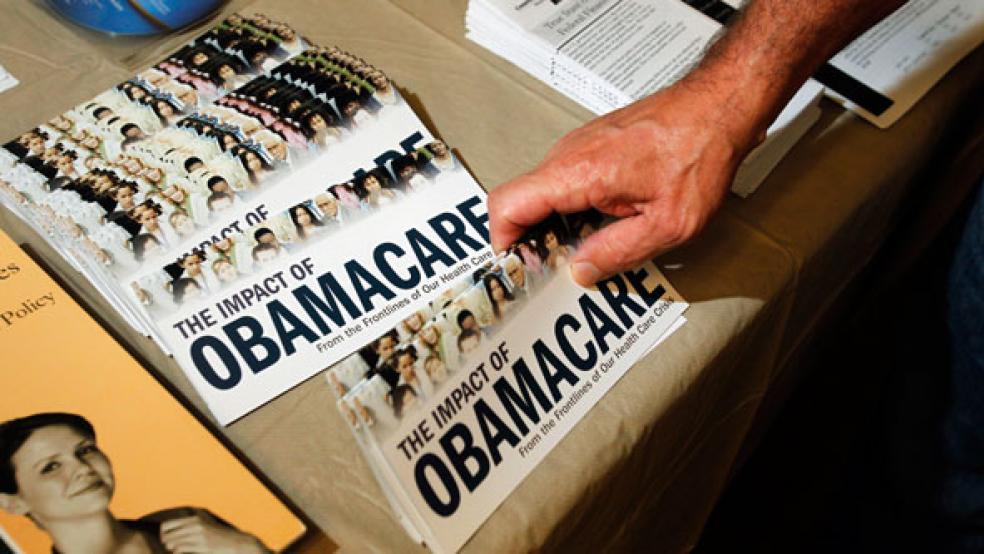Federal government spending on health care skyrocketed last year, substantially outpacing the rate of growth of the nation’s overall health care costs. The trend is largely due to the expansion of Obamacare and Medicaid coverage along with a shocking increase in the cost of biologic specialty drugs like Sovaldi for the treatment of the potentially deadly hepatitis C virus.
While total U.S. spending on health care increased 5.3 percent last year – topping $3 trillion overall – health care funded by the federal government rose by 11.7 percent, to nearly $844 billion in 2014, compared to a 3.5 percent increase in 2013, according to an annual report on health care costs released Wednesday by the Department of Health and Human Services’ Centers on Medicare and Medicaid Services.
Related: Why the U.S. Is Being Gouged on Drug Prices Compared to Other Countries
Among the report’s findings:
- Medicare spending hit a total of $618.7 billion in 2014 and accounted for 20 percent of total health expenditures. Medicare spending grew by 5.5 percent last year compared to 3 percent the year before. That was the fastest growth rate since 2009 and a testament to the impact of rising prescription drug prices, among other factors. Moreover, Medicare spending averaged $11,700 per beneficiary last year, a 2.4 percent increase over the previous year.
- Medicaid spending for the poor and disabled increased 18.4 percent in 2014, to $305 billion, compared with an increase of 6.1 percent in 2013. Overall Medicaid spending by federal, state and local authorities totaled $495.8 billion last year, or 11 percent over the previous year.
- The federal government, which currently picks up the full tab for the cost of Medicaid expansion in nearly two thirds of the states and subsidizes private insurance coverage for many others under the Affordable Care Act, accounted for more than half of the increase in all national health spending last year.
- Although the study doesn’t specify the amount the government spent last year on subsidies for private premiums and out of pocket expenses, the Affordable Care Act marketplace subsidies together with Medicare, Medicaid and the Children’s Health Insurance Program account for 24 percent of the federal budget in 2014, or roughly $836 billion, according to the Center on Budget and Policy Priorities.
- By comparison, state and local government spending on health care actually slowed last year, with a 1.8 percent growth rate compared with a 3.7 percent increase in 2013. That was largely due to a decrease in Medicaid enrollment and spending in states that didn’t take part in the Medicaid expansion program under Obamacare.
Related: Drug Company Profits Soar as Taxpayers Foot the Bill
The spike in spending on both private and publicly financed health care comes after five years of remarkably slow growth and provides fresh ammunition for the raging debate over the efficacy of President Obama’s signature health insurance plan for gradually bringing down the cost of health care. The spike in health care spending topped the growth in the economy, reaching 17.5 percent of GDP.
Republicans in Congress are pressing again this week to pass legislation to repeal the Obamacare legislation. And the administration has been stung by recent reports of declining enrollments and rising costs for insurance premiums and out of pocket costs.
Obama administration officials said yesterday that the new report on rising health care costs in no way shakes their confidence in the program and that the rise in costs may be a short-term phenomenon. Andrew M. Slavitt, the acting administrator of CMS, told The New York Times that last year’s rate of growth in health costs “remains below the level in most years prior to the coverage expansion, while out-of-pocket costs grew at the fifth-lowest level on record.”
Still, the new report undercuts the administration’s long-term goal of “bending the cost curve” of the nation’s health care system. It also highlights government health care programs’ massive and growing drain on the federal budget as Obama and congressional Democrats have created or expanded a broad range of programs for seniors, lower income people and children.
Related: Medicare Sees Striking Increase in Specialty Drug Costs
Bill Hoagland, a budget and health care expert and vice president of the Bipartisan Policy Center, said on Thursday that after nearly a half decade of relative stability, the rise in costs “suggests that we have not overcome the pressures in the health care system for increasing costs.”
Moreover, he said, despite extenuating circumstances such as soaring drug prices, the jury may be out for years in gauging the long-term fiscal impact of increased government involvement in the health care system, such as the Affordable Care Act. “That’s the driver here,” he said. “We thought that increasing insurance coverage would lower the overall cost. That’s not in the cards for the foreseeable future. So we have not licked the health care cost dilemma. We still have a lot of work ahead of us.”





